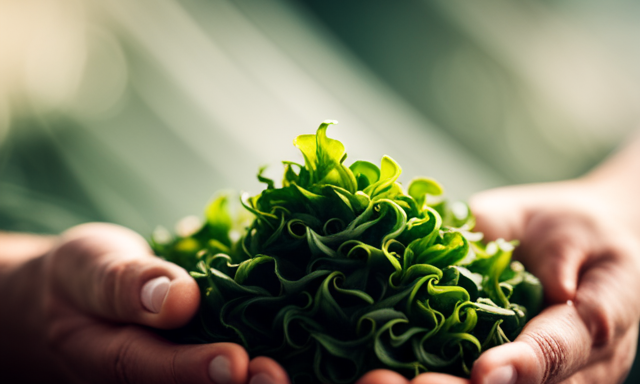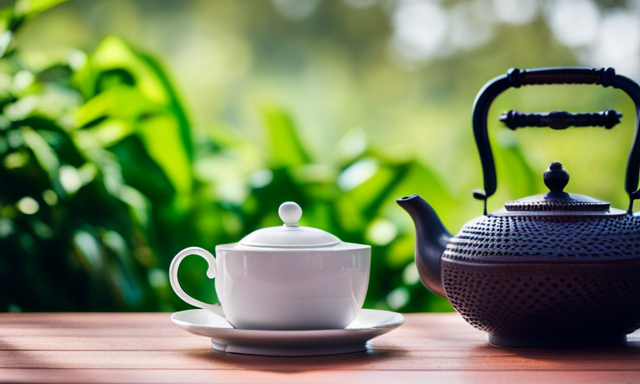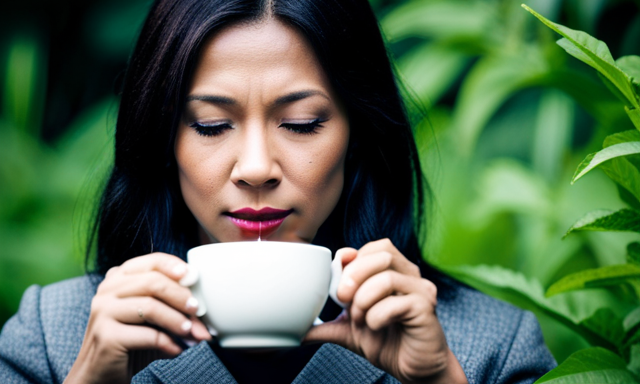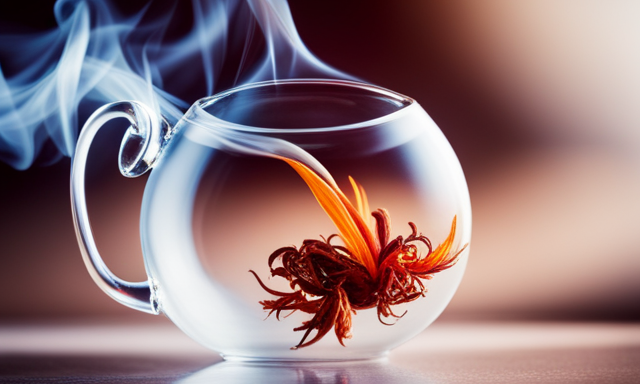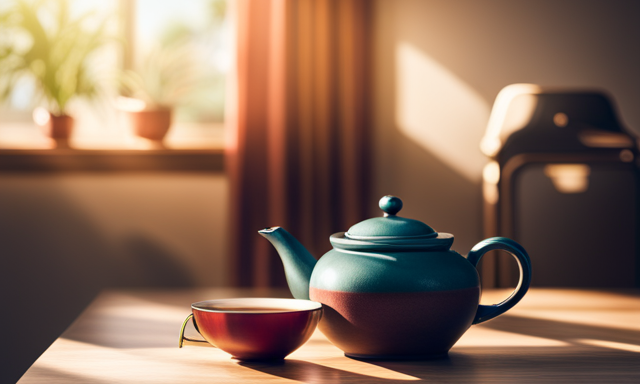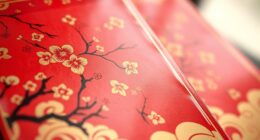Have you ever wondered what makes oolong tea so special? Well, let me tell you, it’s not just your average cup of tea. Oolong tea, with its origins deeply rooted in Chinese and Taiwanese culture, is a fascinating blend of flavors and aromas that will transport your taste buds on a delightful journey.
As a tea enthusiast, I have explored the world of oolong tea, diving into its rich history, unique production process, and health benefits.
Oolong tea is known for its varying oxidation levels, which result in a wide range of flavor profiles. From floral and fruity to earthy and roasted, there is an oolong tea to suit every palate. This tea is not only a treat for the senses but also offers numerous health benefits, including boosting metabolism and aiding in weight loss.
Join me as we embark on a journey through the captivating world of oolong tea, from the Chinese tea ceremony to exploring tea plantations and indulging in tea tastings. Get ready to sip, savor, and discover all that oolong tea has to offer.
Key Takeaways
- Oolong tea originated in China and has a rich history.
- The oxidation levels of oolong tea determine its flavor profiles.
- The process of making oolong tea involves withering, tossing, oxidation, and firing.
- Oolong tea offers various health benefits and unique flavors.
Origins and History of Oolong Tea
Oolong tea, with its fascinating origins and rich history, has captivated tea enthusiasts worldwide.
This unique tea variety originated in China and has been enjoyed for centuries.
Oolong tea is known for its distinctive taste and aroma, which is a result of the oxidation process it undergoes during production.
The leaves are carefully plucked and then subjected to a precise level of oxidation, which is often referred to as ‘semi-fermentation.’
This oxidation process is what sets oolong tea apart from other types of tea.
Additionally, oolong tea is traditionally cultivated using time-honored methods that involve hand-picking the leaves and allowing them to wither in the sun.
These traditional cultivation methods contribute to the exceptional quality and flavor of oolong tea.
Now, let’s explore the fascinating world of oxidation levels and flavor profiles in oolong tea.
Oxidation Levels and Flavor Profiles
Indulge in the exquisite taste and aroma that emerges as the leaves undergo varying levels of oxidation, resulting in a rich and complex flavor profile that is sure to captivate your senses. Oolong tea’s oxidation levels play a crucial role in shaping its unique characteristics. Here are four key points to consider:
-
Partial Oxidation: Oolong tea falls between green and black tea, with oxidation levels ranging from 10% to 80%. This partial oxidation results in a diverse range of flavors and aromas.
-
Floral Notes: Lightly oxidized oolong teas tend to have delicate floral notes, reminiscent of orchids or magnolias. These teas offer a subtle and refreshing experience.
-
Fruity and Honeyed: Moderately oxidized oolong teas strike a balance between floral and fruity flavors. A luscious combination of stone fruits, such as peaches or apricots, mingled with a hint of honey, creates a delightful taste.
-
Toasty and Rich: Heavily oxidized oolong teas develop a robust and toasty flavor profile. These teas often feature notes of roasted nuts, caramel, and even chocolate, providing a deep and satisfying experience.
With this understanding of oxidation levels and flavor profiles, let’s delve into the process of making oolong tea, where these complexities truly come to life.
The Process of Making Oolong Tea
Experience the captivating transformation as the leaves undergo a meticulous process, unveiling the true artistry behind crafting this exquisite beverage.
The tea production process for oolong tea involves withering, tossing, oxidation, and firing. After the leaves are plucked, they are spread out to wither, allowing moisture to evaporate.
Then, they are gently tossed to bruise the edges, kickstarting the oxidation process. This step is crucial in determining the flavor profile of the final tea.
The leaves are then left to oxidize, with the level of oxidation varying depending on the desired taste.
Finally, the leaves are fired to halt oxidation and lock in the intricate flavors. This intricate process results in a tea that is semi-oxidized, with flavors ranging from floral and fruity to smoky and robust.
As we delve into the health benefits of oolong tea, we’ll discover how this remarkable tea can positively impact our well-being.
Health Benefits of Oolong Tea
Discover the incredible ways this remarkable beverage can enhance your overall well-being and leave you feeling refreshed and revitalized.
Oolong tea is not only a delicious drink, but it also offers numerous health benefits. It boosts metabolism, aiding in weight loss, making it a great addition to your fitness routine.
Additionally, oolong tea promotes heart health and supports digestive health, keeping your cardiovascular system and gut in optimal condition.
This tea also enhances mental alertness and focus, helping you stay sharp and productive throughout the day.
Rich in antioxidants, oolong tea helps protect your body against free radicals and oxidative stress.
There are different varieties of oolong tea, such as Tie Guan Yin, Da Hong Pao, Oriental Beauty, Milk Oolong, and Formosa Oolong, each with its unique flavors and characteristics.
To brew oolong tea, consider the water temperature and steeping time, as well as the tea to water ratio. There are various brewing methods, including gongfu, western style, and cold brew.
To enhance the flavor, you can also pair oolong tea with different foods. Light and floral oolongs go well with seafood and salads, while roasted and aromatic oolongs complement grilled meats. For a sweet treat, try fruity oolongs with desserts.
Oolong tea also has rich traditions and ceremonies, such as the Chinese tea ceremony and Taiwanese Gongfu tea ceremony, which are worth exploring.
If you want to dive deeper into the world of oolong tea, consider traveling to tea plantations and attending tea tastings.
Now, let’s delve into how oolong tea boosts metabolism and aids in weight loss.
Boosts Metabolism and aids in Weight Loss
Kickstart your metabolism and shed those extra pounds with the help of this amazing beverage that can aid in weight loss. Oolong tea is known to boost metabolism, making it easier for your body to burn calories and fat.
Here are three ways oolong tea can help you achieve your weight loss goals:
-
First, oolong tea contains polyphenols, which activate enzymes in the body that can enhance fat breakdown. This means that by drinking oolong tea, you can encourage your body to burn stored fat more efficiently.
-
Second, oolong tea can increase your metabolic rate, helping you burn more calories throughout the day. This can be especially beneficial when combined with a healthy diet and regular exercise.
-
Third, oolong tea can help regulate blood sugar levels, reducing cravings and preventing overeating. By stabilizing your blood sugar, oolong tea can support healthy weight management.
With its ability to boost metabolism and aid in weight loss, oolong tea is a powerful tool for those looking to shed pounds and improve their overall health.
Transitioning into the next section about ‘promotes heart health,’ oolong tea offers even more benefits beyond weight loss.
Promotes Heart Health
Improve your cardiovascular health by incorporating this remarkable beverage into your daily routine. Oolong tea has been shown to play a significant role in reducing cholesterol levels, making it an excellent choice for those wanting to promote heart health.
Studies have found that regular consumption of oolong tea can help lower LDL (bad) cholesterol levels, thereby reducing the risk of heart disease. Furthermore, research has also shown that oolong tea may have positive effects on blood pressure. It has been found to help lower both systolic and diastolic blood pressure readings, which are important indicators of overall heart health.
By adding oolong tea to your diet, you can support your cardiovascular system and take steps towards a healthier heart.
Transitioning into the subsequent section about ‘supports digestive health,’ oolong tea offers even more benefits for your well-being.
Supports Digestive Health
Boost your digestive health by incorporating this remarkable beverage into your daily routine. Oolong tea, known for its numerous health benefits, has been shown to support digestion.
The combination of antioxidants and polyphenols found in oolong tea can help improve digestion by reducing inflammation and promoting the growth of beneficial gut bacteria. Additionally, oolong tea contains catechins, which can help regulate the digestive system and prevent digestive disorders such as indigestion and bloating.
Regular consumption of oolong tea has also been linked to improved metabolism and weight management, further supporting digestive health. By including this tea in your daily routine, you can enjoy the benefits it offers for your digestion.
Transitioning to the next section, oolong tea not only supports digestive health but also enhances mental alertness and focus.
Enhances Mental Alertness and Focus
Stay sharp and on top of your game with a cup of this incredible elixir. It’s like having a focused spotlight on your mind, helping you cut through distractions and accomplish tasks with ease. Oolong tea is not only known for its delicious taste, but it also has remarkable benefits for enhancing mental alertness and focus.
Here are three ways oolong tea can boost your cognitive function and improve concentration:
-
Heightened Awareness: Oolong tea contains caffeine and theanine, which work synergistically to increase attention and wakefulness, promoting a state of heightened awareness.
-
Enhanced Memory: The polyphenols in oolong tea have been found to improve memory and cognitive performance, making it an ideal companion for studying or work that requires mental clarity.
-
Increased Productivity: Oolong tea stimulates the brain’s alpha waves, promoting a relaxed yet focused state of mind that enhances productivity and efficiency.
As you transition into the next section about oolong tea being rich in antioxidants, you’ll discover even more reasons to incorporate this remarkable brew into your daily routine.
Rich in Antioxidants
Indulging in this incredible elixir will flood your body with a wealth of antioxidants, nourishing your cells and supporting your overall health and well-being. Oolong tea is renowned for its rich antioxidant content, which sets it apart from other teas. Antioxidants are powerful compounds that protect our cells from damage caused by free radicals, helping to prevent chronic diseases and slow down the aging process. Oolong tea contains a range of antioxidants, including polyphenols and catechins, which have been shown to have numerous health benefits. These antioxidants can help reduce inflammation, improve heart health, boost the immune system, and even aid in weight management. Incorporating oolong tea into your daily routine can have a positive impact on your overall health. Moving forward, let’s explore the different varieties of oolong tea and their unique characteristics.
Different Varieties of Oolong Tea
Explore the diverse range of oolong tea varieties and discover the unique characteristics that make each one a delightful and intriguing choice for tea enthusiasts. Did you know that there are over 100 different types of oolong tea available?
Oolong teas come in a wide array of flavors and aromas, ranging from light and floral to rich and roasted. Some popular varieties include:
- Ti Kuan Yin: Known for its orchid-like aroma and sweet, fruity taste.
- Da Hong Pao: A highly prized tea with a deep, roasted flavor and hints of chocolate.
- Jin Xuan: Also known as Milk Oolong, this tea has a creamy, buttery taste and a smooth texture.
To fully appreciate the nuances of each variety, it is important to use the right brewing techniques, such as adjusting water temperature and steeping time.
Now, let’s delve into the fascinating world of Tie Guan Yin tea.
Tie Guan Yin
Immerse yourself in the captivating allure of Tie Guan Yin, a tea that bewitches with its delicate floral aroma and enchanting flavor profile.
Tie Guan Yin is one of the most famous and beloved varieties of oolong tea, originating from the Fujian province of China. This tea is known for its unique processing method, which involves semi-oxidation and skillful twisting of the leaves. The result is a tea that strikes a perfect balance between the freshness of green tea and the richness of black tea.
Drinking Tie Guan Yin offers a myriad of benefits. It is believed to improve digestion, boost metabolism, and promote weight loss. It also contains antioxidants that help fight free radicals and protect against chronic diseases. Additionally, Tie Guan Yin is known for its calming properties, making it a wonderful choice for relaxation and stress relief.
As we transition to the next section about ‘da hong pao’, let’s explore another extraordinary oolong tea variety that will transport you to the breathtaking cliffs of the Wuyi Mountains.
Da Hong Pao
Prepare to be captivated by the rich and robust flavor of Da Hong Pao. This famous oolong tea, also known as Big Red Robe, transports you to the breathtaking cliffs of the Wuyi Mountains. The leaves of Da Hong Pao are carefully handpicked from ancient tea trees that thrive in the rocky terrain of the Wuyi Mountains. The unique terroir of this region gives the tea a distinct mineral taste and a lingering floral aroma.
But Da Hong Pao is not just about its delightful sensory experience. It is also renowned for its health benefits. Packed with antioxidants, this tea can boost metabolism, improve digestion, and support cardiovascular health.
Now, let’s delve into the captivating world of Oriental Beauty.
Oriental Beauty
Get ready to be enchanted by the alluring essence of Oriental Beauty. This tea transports you to a world of delicate flavors and captivating aromas. Also known as Bai Hao Oolong, Oriental Beauty is a unique and highly prized oolong tea from Taiwan. It is famous for its beautiful appearance and complex taste profile.
The leaves of Oriental Beauty are carefully handpicked, with an emphasis on the young leaves and buds that have been bitten by small green leafhoppers. This insect bite triggers a natural response in the tea plant, resulting in the production of special compounds that give Oriental Beauty its distinctive flavor.
The tea brews into a golden liquor with a sweet, fruity taste and a floral aroma that is reminiscent of honey and ripe peaches. Its complex flavor profile makes it a favorite among tea connoisseurs.
Transitioning to the next section, let’s now explore the unique characteristics of milk oolong.
Milk Oolong
Moving on from the delightful Oriental Beauty, let’s explore another fascinating oolong tea variety: Milk Oolong. As a tea enthusiast, I must say that Milk Oolong is truly a unique and captivating tea. Its name comes from its creamy and milky flavor, which is reminiscent of sweet milk and butter. This flavor is achieved through a special process where the tea leaves are steamed with milk, allowing them to absorb its aroma and taste.
Not only does Milk Oolong have a delightful flavor, but it also offers a range of health benefits. This tea is rich in antioxidants, which can help boost the immune system and protect the body against free radicals. Additionally, it is believed to aid in digestion, promote weight loss, and improve skin health.
Now, let’s delve into the world of Formosa Oolong and discover its unique characteristics and flavors.
Formosa Oolong
Prepare to be blown away by the irresistible allure of Formosa Oolong. Its enchanting aroma and flavors will transport you to a paradise of tea indulgence.
Formosa Oolong, also known as Taiwanese Oolong, originates from the beautiful island of Taiwan. This tea is renowned for its unique characteristics, which result from the specific growing conditions and meticulous processing methods employed by skilled tea artisans.
The leaves of Formosa Oolong are tightly rolled, often resembling small pellets, and range in color from green to dark brown. When brewed, this tea produces a golden liquor with a smooth, velvety texture.
The flavor profile of Formosa Oolong is rich and complex, with notes of floral sweetness and a subtle hint of fruitiness. To fully appreciate this tea, it’s essential to use the proper brewing techniques. Steep the leaves at a temperature of around 185°F for 3-4 minutes.
Now, let’s delve into the art of brewing oolong tea…
How to Brew Oolong Tea
Experience the artistry of brewing oolong tea by mastering the delicate process that brings out its full range of flavors and aromas. To achieve the perfect brew, follow these brewing techniques:
-
Choose high-quality loose leaf oolong tea leaves. The leaves should be tightly rolled and have a vibrant color.
-
Use a clay teapot or a ceramic teacup to enhance the tea’s flavor. Avoid using metal or plastic containers that can alter the taste.
-
Allow the leaves to unfurl by rinsing them briefly with hot water and then discarding the water. This step helps to release the tea’s essence.
By carefully following these steps and using the right tea accessories, you can create a mesmerizing cup of oolong tea.
Now, let’s delve into the importance of water temperature and steeping time in order to further enhance the brewing process.
Water Temperature and Steeping Time
To brew a perfect cup of oolong tea, it’s like finding the ideal balance between water temperature and steeping time, as if conducting a delicate symphony.
The water temperature plays a crucial role in bringing out the flavors and aromas of the tea leaves. For oolong tea, it is recommended to use water that is around 195°F (90°C). This temperature allows the leaves to unfurl slowly, releasing their complex flavors in a controlled manner.
Steeping techniques also vary depending on the type of oolong tea and personal preference. Some people prefer a shorter steeping time of 2-3 minutes for a lighter and more floral taste, while others opt for a longer steeping time of 5-7 minutes for a stronger and bolder flavor.
As we explore the next section on tea-to-water ratio, it becomes evident that every aspect of brewing oolong tea contributes to the ultimate experience.
Tea-to-Water Ratio
Achieve the perfect balance and enhance your brewing skills by mastering the ideal tea-to-water ratio for a captivating cup of oolong. The water temperature and brewing techniques play a crucial role in extracting the flavors and aromas of this exquisite tea.
For a lighter oolong, such as green oolong, a ratio of 1 teaspoon of tea leaves to 8 ounces of water is recommended. This allows the delicate flavors to shine through without overpowering the palate.
On the other hand, a darker oolong, like roasted oolong, benefits from a higher ratio of 1 tablespoon of tea leaves to 8 ounces of water. This brings out the rich, toasty notes and creates a more robust brew.
As we delve into the different brewing methods (gongfu, western style, cold brew), let’s explore how they further enhance the oolong tea experience.
Brewing Methods (Gongfu, Western Style, Cold Brew)
Get ready to explore different brewing methods that will take your oolong tea to new heights! There are several brewing techniques that can bring out unique flavor variations in your oolong tea. Here are four methods to try:
-
Gongfu: This traditional Chinese method involves steeping a high ratio of tea leaves to water in a small teapot. It results in a concentrated, aromatic brew with multiple infusions.
-
Western Style: This method uses a larger teapot and a lower tea-to-water ratio. It produces a more balanced flavor profile and is great for enjoying oolong tea in larger quantities.
-
Cold Brew: By steeping oolong tea in cold water for several hours, you can create a refreshing, smooth, and slightly sweet brew that is perfect for hot summer days.
-
Combination: Feel free to experiment and combine different brewing methods to discover your own unique flavor profile.
Now, let’s move on to some tips for enhancing the flavor of your oolong tea.
Tips for Enhancing Flavor
Ready to take your oolong tea experience to the next level? Whip out your mad tea skills and discover the secret tips to unlock the tantalizing flavors of your brew.
When it comes to steeping oolong tea, timing is key. For a light and floral taste, steep for 2-3 minutes, while a more robust flavor can be achieved by steeping for 5-6 minutes. Remember to use water that is just below boiling point, around 180-190°F, to avoid burning the delicate leaves.
To ensure you’re using high quality oolong tea, look for tightly rolled leaves that are a vibrant green or rich amber color. Avoid tea that has a stale or musty smell.
Now that you’ve mastered the art of steeping, let’s explore the perfect pairings of oolong tea with food.
Pairing Oolong Tea with Food
Elevate your culinary experience by discovering the perfect food pairings that complement the exquisite flavors of oolong tea.
When it comes to pairing oolong tea with food, there are a few guidelines to keep in mind. Light and floral oolongs, with their delicate and fragrant aromas, pair wonderfully with seafood and salads. The subtle flavors of the tea enhance the freshness of the seafood and the crispness of the salads, creating a harmonious balance of flavors.
On the other hand, roasted and aromatic oolongs, with their deep and rich flavors, are a great match for grilled meats. The smoky and robust notes of the tea complement the savory and charred flavors of the meats, creating a truly satisfying combination.
So whether you’re enjoying a light and floral oolong with a seafood dish, or a roasted and aromatic oolong with a juicy steak, the flavors will meld together perfectly, creating a truly memorable dining experience.
Now, let’s dive into the world of light and floral oolongs with seafood and salads.
Light and Floral Oolongs with Seafood and Salads
As you embark on a culinary journey, let the delicate and floral notes of these graceful teas dance with the freshness of seafood and the crispness of salads.
Light and floral oolongs are the perfect companion for seafood dishes, as their subtle flavors complement the oceanic flavors of fish and shellfish. The smooth and refreshing taste of oolong tea enhances the natural sweetness of seafood, creating a harmonious balance of flavors. Whether it’s a steamed fish or a shrimp salad, the floral undertones of the tea add a layer of complexity to the dish.
Additionally, the light and crisp nature of oolong tea complements the refreshing crunch of salads, making it an ideal pairing.
Now, let’s move on to explore the world of roasted and aromatic oolongs with grilled meats.
Roasted and Aromatic Oolongs with Grilled Meats
When it comes to pairing oolong tea with food, there are endless possibilities. In my previous subtopic, I discussed how light and floral oolongs complement seafood and salads perfectly. Now, let’s dive into the world of roasted and aromatic oolongs, which are the ideal companions for grilled meats.
Roasted oolong teas have a rich, toasty flavor that pairs exceptionally well with the smoky char of grilled meats. The deep, earthy notes of the tea enhance the savory flavors of the meat, creating a harmonious and satisfying combination.
Not only do roasted oolongs elevate the taste of grilled meats, but they also offer numerous health benefits. These teas are known for their digestive properties and can help alleviate bloating and indigestion that often accompany heavy meals.
As we move forward to the next section about sweet and fruity oolongs with desserts, we will explore how oolong tea can be a versatile and delightful addition to any meal.
Sweet and Fruity Oolongs with Desserts
Indulge your sweet tooth and discover a whole new world of flavor with these sweet and fruity oolongs that perfectly complement your favorite desserts.
The combination of oolong tea and desserts creates a harmonious flavor pairing that will leave your taste buds craving for more. The natural sweetness and fruity notes of the oolong tea beautifully enhance the indulgent flavors of desserts, creating a delightful experience.
Whether you’re enjoying a rich chocolate cake or a light fruit tart, the sweet and fruity oolongs add a layer of complexity and depth to each bite. The floral and fruity aromas of the tea dance on your palate, creating a symphony of flavors.
As you savor the last bite of your dessert, the transition to exploring oolong tea traditions and ceremonies is seamless.
Oolong Tea Traditions and Ceremonies
After indulging in the delightful pairing of sweet and fruity oolongs with desserts, it’s time to delve into the rich traditions and ceremonial practices surrounding oolong tea.
Oolong tea, with its intricate flavor profiles and unique processing methods, has earned a special place in tea ceremonies across various cultures.
In the world of oolong tea, traditions are deeply rooted, and every step of the tea-making process holds significance. From the careful selection of tea leaves to the precise brewing techniques, each aspect contributes to the overall experience.
To fully appreciate the art of oolong tea, one must understand the importance of respecting the tea leaves, the water used, and the vessels employed. The tea ceremony becomes a meditative practice, allowing for a moment of mindfulness and appreciation.
Now, let’s transition into the subsequent section about the Chinese tea ceremony, where we will explore the intricate steps and rituals in more detail.
Chinese Tea Ceremony
Immerse yourself in the captivating world of the Chinese tea ceremony, where every step is a carefully choreographed dance of tradition and grace, awakening your senses to a symphony of flavors and rituals. The Chinese tea ceremony is steeped in centuries-old customs and is an integral part of Chinese culture. The ceremony is typically performed in a tranquil setting, with participants dressed in traditional attire. Tea utensils play a vital role in the ceremony, each serving a specific purpose. For instance, the tea pot is used to brew the tea, while the tea cups are designed to enhance the aroma and taste of the tea. To give you a glimpse into this enchanting ceremony, here is a table showcasing some common Chinese tea utensils:
| Utensil | Description |
|---|---|
| Tea pot | Used to brew the tea |
| Tea cups | Enhances the aroma and taste of the tea |
| Tea strainer | Filters out tea leaves |
| Tea scoop | Measures and transfers tea leaves to the pot |
Now, let’s transition into the subsequent section about the Taiwanese gongfu tea ceremony, where a whole new world of tea customs awaits.
Taiwanese Gongfu Tea Ceremony
Discover the captivating elegance of the Taiwanese Gongfu Tea Ceremony, where you’ll be transported to a world of ancient rituals and aromatic delights.
Immerse yourself in the rich history of Taiwanese tea culture. Experience the meticulous tea preparation techniques passed down through generations. Indulge in the exquisite flavors and aromas of high-quality oolong teas.
In Taiwan, tea is not just a beverage; it is a way of life. The Gongfu Tea Ceremony is a traditional practice that showcases the artistry and precision of tea preparation. Every step, from heating the teapot to pouring the tea, is executed with grace and intention. The ceremony embodies the values of mindfulness, respect, and appreciation for nature’s gifts.
As we delve deeper into the world of Taiwanese tea culture, let’s explore the popular oolong tea brands and suppliers, where you can find the finest teas to recreate this enchanting experience at home.
Popular Oolong Tea Brands and Suppliers
Indulge in the exquisite flavors and aromas of high-quality oolong teas, sourced from popular Taiwanese brands and suppliers that have been trusted by tea enthusiasts for generations. Did you know that Taiwan is the second-largest exporter of tea in the world, with an annual production of over 20,000 metric tons? Taiwanese oolong teas are renowned for their intricate production process and the variety of tea leaves used. From lightly oxidized teas like Baozhong and Pouchong to more heavily oxidized teas like Oriental Beauty and Dong Ding, each type offers a unique taste and experience. To visualize the diverse range of oolong teas available, imagine a table with three columns representing different levels of oxidation and three rows showcasing the various types of tea leaves used. As we explore the world of oolong tea, we will delve into the art of tea plantation visits and delightful tea tastings, immersing ourselves in the rich culture and history.
Exploring the World of Oolong Tea: Traveling to Tea Plantations and Tea Tastings
After exploring the popular oolong tea brands and suppliers, I couldn’t resist delving deeper into the world of oolong tea. So, I decided to embark on a journey to visit tea plantations and attend tea tastings.
It was an incredible experience to witness firsthand the meticulous process of growing and harvesting tea leaves. The vast tea plantations stretched as far as the eye could see, with rows upon rows of tea bushes basking in the sunlight.
At the tea tastings, I learned about the different varieties of oolong tea, from the light and floral ones to the rich and robust ones. The flavors and aromas danced on my palate, leaving a lasting impression.
This immersive journey allowed me to truly appreciate the artistry and craftsmanship behind every cup of oolong tea.
Frequently Asked Questions
Can oolong tea be consumed by people with certain health conditions?
Oolong tea should be consumed with caution by pregnant women and nursing mothers, as it may have potential harmful effects. Individuals with heart conditions should also be aware of the potential side effects and consult with their healthcare provider.
What is the recommended brewing method for oolong tea?
The recommended brewing method for oolong tea involves using water at a temperature of 190-200°F and steeping for 3-5 minutes. This method brings out the complex flavors and aromas of oolong tea, ensuring a delightful and satisfying cup.
Are there any specific tips for enhancing the flavor of oolong tea?
To enhance the flavor of oolong tea, I recommend adjusting the brewing time and temperature to bring out the desired taste notes. Experiment with shorter steeping times and slightly higher temperatures to achieve a more robust flavor profile.
What are the traditional oolong tea ceremonies in China and Taiwan?
In China and Taiwan, traditional oolong tea ceremonies hold great cultural significance. These ceremonies showcase the art of brewing and serving oolong tea, with meticulous attention to every detail, creating a serene and harmonious atmosphere.
Are there any popular oolong tea brands and suppliers that are recommended for beginners?
Sure! When it comes to popular oolong tea brands, one that stands out is Teavana. As for the best oolong tea suppliers, I highly recommend checking out Harney & Sons and Adagio Teas.
Conclusion
In conclusion, oolong tea is a captivating blend of history, flavor, and health benefits.
As I sip on a warm cup of this exquisite tea, I am transported to the lush tea plantations of China and Taiwan.
The process of making oolong tea is a meticulous art that results in a balance of fruity, floral, and earthy flavors.
Not only does oolong tea boost metabolism and aid in weight loss, but it also offers a moment of tranquility in the bustling world we live in.
So why not indulge in a cup of oolong tea and let its enchanting qualities soothe your soul?

